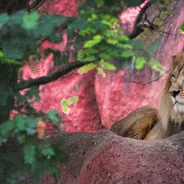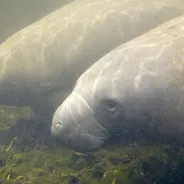One man in Florida has been hunting snakes in his area for a living, but he didn't expect to come across the prize he found this month. He managed to ensnare an eighteen-foot long Burmese python, and is now the record-holder for capturing the largest Burmese python in the state's history.
John Hammond (not to be confused with founder of Jurassic Park) captured the snake in the Florida Everglades, all as part of a Python Elimination Program conducted by the South Florida Water Management District.
“Ran down, grabbed it by the head," Hammond told Fox 35 News. "When I did that, it constricted me from the waist down, which was the plan.”

According to Hammond, he simply let the snake tire itself out as he slowly dragged it his truck - a process that took around 45 minutes in total. However, it was when he got a good look at the 150-pound python that he realised he'd have a hard time capturing it.
“The snake bags were too small," he explained. "I had a tent bag in the truck. I coaxed it into the tent bag, and then the tent bag into a gang box."
Hammond later took it to his driveway, where it was photographed and displayed to his neighbours before he skinned the animal for its hide. “It’s domestic leather, and if we can get to using it here, it’s not wasted," he said - but it's not just for sport.
“These things are loose in the Everglades, they don't have any natural enemies and they just keep swallowing-up everything else and getting bigger and bigger," one of John's neighbours, Mary, told Fox 35. "It's another bad thing that's happened to Florida."
Professional python hunters, such as Hammond, are selected by officials from the program, and are given permission to go to district-owned lands to hunt, capture, and humanely euthanise the species from the ecosystem.
“They've eaten-up the marsh rabbits, the small mice and stuff, and everything that normally eats them is impacted because they can't. The food chain is not there anymore,” Hammond explained.
Burmese pythons have "decimated native populations of wildlife," the SFWMD have previously said, when a 17-foor, 5- inch python was caught in November. Kyle Pennison captured the female python while hunting in Miami-Dade County. His catch, which weighed in at 120 pounds, was the third the program had found that measured over 17 feet - at the time, at least.
Since the program started, over 1,850 of the snakes have been caught on District lands. Hammond's recent find was euthanised by officials with the Florida Fish and Wildlife Conservation Commission, who took to Facebook earlier in the week to share a photo of Hammond's rare find.
While it's sad to see these creatures meet their end, their negative impact on various other populations means that Hammond's work seems to be necessary - though it's hard to imagine how he can brave searching for pythons that big every day.












